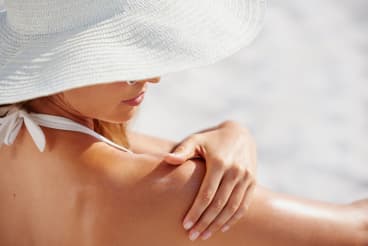 Intense Pulsed Light
Intense Pulsed Light9 Dermatologists Share Expert Tips For Soothing Sunburn
If your Labor Day weekend plans involve some fun in the sun, you are going to want to go ahead and bookmark this article now.
Labor Day weekend is upon us, which means you may very well be gearing up for one last outdoor jaunt that involves some fun in the sun. Ideally, you’ve packed an arsenal of sun protection — from hats and sunglasses to UPF clothing and, of course, sunscreen. But even the best laid plans can lead to sunburn. “Sunburns occur when you have an overexposure of UV rays to your skin,” says Samer Jaber, MD, a board certified dermatologist and founder of Washington Square Dermatology in New York City. “Sunburns cause DNA damage to your skin.”
Unfortunately, a little ultraviolet radiation goes a long way. “Even a light sunburn or tan is a sign of skin damage,” says Dendy Engelman, MD, a board certified dermatologist and dermatologic surgeon in NYC. While a sunburn may not seem that serious at the time, “just one bad burn or accumulated skin damage over time can have a huge impact on your skin,” she cautions. As she explains, that impact ranges from cosmetic (i.e. premature signs of aging) to life-threatening (read: skin cancer), which is why it’s important to take skin protection seriously.
The effects of sunburn are two-fold. “There are a multitude of short-term and long-term concerns with a major sunburn,” says Ava Shamban, MD, a board certified dermatologist in Beverly Hills and creator of The Box by Dr Ava. Short term, you are likely familiar with side effects like pain, fever, blistering, and erythema solare (read: redness) that lead to skin peeling, discomfort, and dehydration. “Long term, blistering sunburns are associated with an increased risk of melanoma on any body part, premature skin aging in the form of lines and wrinkles, irregular texture, brown spots, and both hyperpigmentation and hypopigmentation, as well as laxity and sagging,” she explains.
At a minimum, your sun care routine should include a broad spectrum sunscreen with a sun protection factor (SPF) of 30 or higher that is reapplied every two hours (or more often when swimming and sweating). But, if you’ve been overexposed, there are some steps you can take to make yourself more comfortable and maybe even minimize the damage. Below, top dermatologists and a plastic surgeon share their expert tips for soothing sunburn.
The Expert: Dendy Engelman, MD
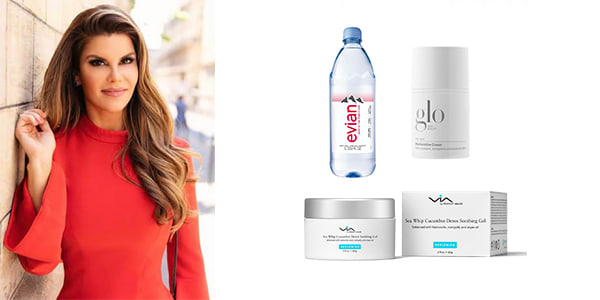
What to Expect: “Depending on the severity of the burn, patients may experience skin discoloration, pain, flaking, peeling, and tightness,” Dr. Engelman says. “This can take anywhere from one day to a week or more to heal.” Try This: Dr. Engelman’s sunburn-soothing tips are about healing from both the inside out and outside in:
- Perfect Image Sea Whip Cucumber Detox Soothing Gel: “This gel is a wonderful soothing remedy for sunburn and other skin-stressors like waxes and chemical peels,” she explains. “It is formulated with sea whip, cucumber, hyaluronic acid, aloe vera and oatmeal extracts to hydrate and nourish skin and reduce redness, inflammation, and irritation.” What’s more? “It’s great for all skin types and is free of parabens, gluten, and phthalates,” she adds.
- Glo Skin Beauty Restorative Cream: As its name suggests, “this rich moisturizer is designed to soothe, hydrate, and repair dry or sunburned skin,” Dr. Engelman says. “It’s formulated with resveratrol — an antioxidant that’s great for addressing sun damage — along with healing shea butter and jojoba oil.”
- evian Natural Spring Water: “When you have a sunburn, your skin’s natural response is to draw water from your body to the surface of your skin in order to heal it, which can leave you dehydrated,” she cautions. While good ol’ tap water will do, Dr. Engelman suggests Evian Natural Spring Water because it’s loaded with “minerals and electrolytes that are integral to your body’s health.”
Avoid That: “You’ll want to avoid any ingredients and products that are potentially irritating or exfoliating until your sunburn heals, as they can cause further pain and damage and prolong the healing process,” she says. This includes hydroxy acids, physical scrubs, and retinol. A good rule of thumb: “Unless a product or ingredient will hydrate and heal your skin barrier, you should probably avoid using it until your skin has a chance to repair itself,” Dr. Engelman notes. “Stick to nourishing products with ceramides, peptides, vitamin E, aloe, and shea.”
The Expert: Julie Russak, MD

What to Expect: When your skin is sunburned, you can expect “redness, irritation, peeling, and long-term dryness,” says Julie Russak, MD, a board certified dermatologist and founder of Russak Dermatology in NYC. Try This: Antioxidants — in both topical and ingestible forms — are key to healing a sunburn. Topically, Dr. Russak likes SkinCeuticals CE Ferulic because it features vitamin C, vitamin E, and ferulic acid to “reverse and repair sun damage.” ISDIN Sunisdin supplements, meanwhile, work to “repair and protect from within,” she says. Avoid That: Now is the time to lay off retinol and strong acid peels, Dr. Russak notes.
The Expert: Ava Shamban, MD
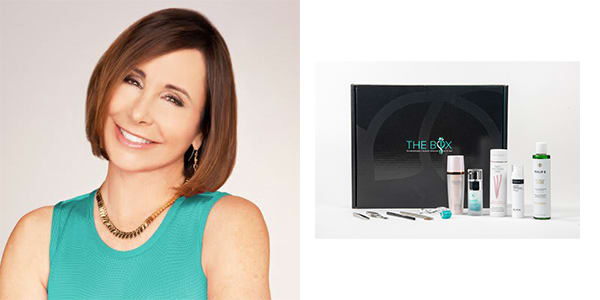
What to Expect: As Dr. Shamban explains, the short-term effects of sunburn include “pain and fever,” “weeping blisters,” “heat in the dermis,” and “overall erythema solare.” All of this leads to “skin peeling, more discomfort, and dehydration,” she shares. Long term, sunburns “are associated with an increased risk of melanoma” and “premature signs of aging.” Try This: For starters, “take aspirin or Advil to reduce inflammation,” Dr. Shamban says. From there, she recommends a vitamin C serum because “it has been shown to help reduce sunburn and help cell rejuvenation for the damages to the protective layer of our skin and the skin cells that have died.” Her summer 2021 Box by Dr Ava features the VI Derm Beauty Vitamin C Brightening Concentrate. Combine it with aloe and hydrocortisone cream to further reduce inflammation and numb the itching and pain. Finally, “cool — NOT too cold — compresses can also be helpful to soothe the area,” she adds. Avoid That: Whether you’re burned by the sun or a curling iron, Dr. Shamban says to avoid “retinoids, AHAs, and BHAs.” When in doubt, opt for “soothing, calming, and repairation” not “activation and aggravation,” she says.
The Expert: Adriana Lombardi, MD
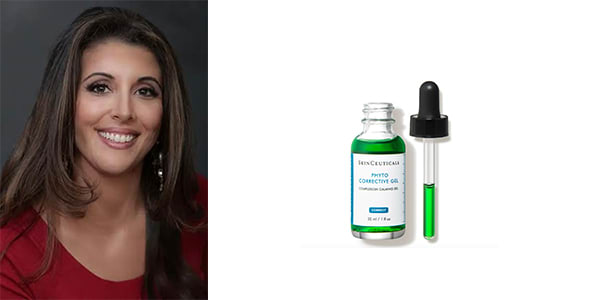
What to Expect: “The main concerns a patient deals with after sunburn include pain, swelling, inflammation, and peeling (a.k.a. desquamation),” says Adriana Lombardi, MD, a board certified dermatologist of the Skin Cancer & Cosmetic Surgery Center of New Jersey. Try This: As Dr. Lombardi explains, getting the inflammation under control as quickly as possible is the best way to minimize discomfort and peeling. “A combination of topical steroids and anti-inflammatory agents will help to decrease inflammation and improve symptoms,” she says. Her pick? The SkinCeuticals Phyto Corrective Gel and crushed aspirin. Avoid That: Now is not the time to reach for your skincare with “acids, retinol, and/or alcohol.” They will “worsen symptoms of sunburn,” Dr. Lombardi shares.
The Expert: Samer Jaber, MD

What to Expect: “The biggest immediate issue I see when patients develop sunburns is pain and discomfort,” Dr. Jaber says. “Pain generally improves over several days (as long as it's not severe) and can be treated with oral anti-inflammatories like ibuprofen or acetaminophen.” Try This: The key to soothing a sunburn is restoring the damaged skin barrier. “Cold compresses and oatmeal baths can be soothing to the inflamed, sunburned skin,” he says. Another tip? “If it is a mild sunburn, then moisturizing lotions or creams can be effective,” Dr. Jaber explains. “If it is severe, then get a moisturizing ointment.” When it comes to creams, he’s a fan of Cetaphil and CeraVe, while ointments like Aquaphor or Vaseline are good for more severe burns. Over-the-counter 1 percent hydrocortisone “is also a great option to help soothe sunburns,” he adds. Avoid That: “When you are sunburned, your skin barrier is not intact, so it is very important to avoid any products that could further damage or irritate your skin,” he says. As such, avoid exfoliating acids and other chemical irritants.
The Expert: Amanda Doyle, MD
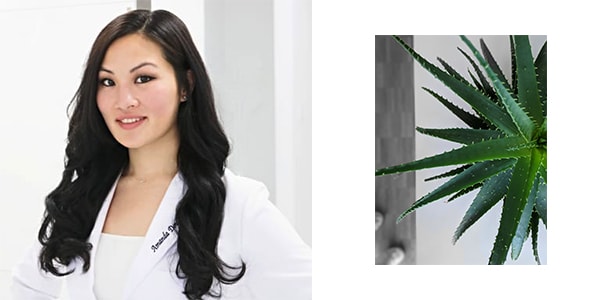
What to Expect: “Redness, sensitivity, blistering, and scarring are common concerns immediately after a sunburn,” explains Amanda Doyle, MD, a board certified dermatologist at Russak Dermatology in NYC. “Later on, patients definitely worry about the long-term effects of sunburns like aging, sun spots, and skin cancer.” Try This: While Dr. Doyle’s sunburn-soothing recs depend on the location of the burn and the severity, she generally suggests some combination of:
- Aloe
- Topical steroids (usually prescription strength)
- Ibuprofen to relieve pain and sensitivity
The non-negotiable on her list? “Strict sun avoidance.” Once your skin is compromised, do not expose it any further. Avoid That: “I have them avoid most of their normal skincare routine for a week or more post-sunburn,” Dr. Doyle says. You especially want to skip anything that is irritating or increases photosensitivity.
The Expert: Geeta Yadav, MD
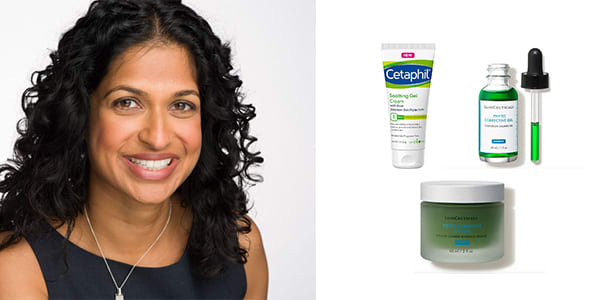
What to Expect: “Red, painful, and, sometimes, blistering skin are the most common acute concerns patients deal with post-sunburn, but there are many other ramifications that they should worry about as well,” cautions Geeta Yadav, MD, a board certified dermatologist and founder of Skin Science Dermatology in Toronto. The longer term impacts of ultraviolet radiation, she notes, can include “premature skin aging, sunspots, and, most significantly, skin cancers.” Try This: The good news? “If you’re suffering from a sunburn, there are a few remedies you can try at home before purchasing a new product,” Dr. Yadav shares. She says cool baths or showers followed by a moisturizer can “help to relieve pain and ease dryness,” aspirin or ibuprofen can “help reduce pain and swelling,” and oatmeal baths can “soothe and calm inflammation.” If you need something “a little stronger,” consider the following:
- For Soothing Moisture: Try a gel-based, aloe-infused moisturizer, like the Cetaphil Soothing Gel Cream. The aloe “has anti-inflammatory properties and can also help to prevent peeling,” she says.
- For Itch Relief: “If your sunburn is itchy, I recommend using a hydrocortisone cream to reduce the itchiness and swelling,” Dr. Yadav says. The caveat? “Do not use this if you have open sores or blisters – it can cause additional irritation,” she cautions.
- For Sun Damage: To soothe sunburn and begin to correct subsequent damage on the face, Dr. Yadav recommends the SkinCeuticals Phyto Corrective Masque or Phyto Corrective Gel.
Avoid That: “Post-sunburn, you want to avoid anything that will cause excess drying, so skip any products that contain alcohol,” she says. While it might seem contradictory, “you should stay away from pain-relieving products, like benzocaine and lidocaine, as they can exacerbate symptoms,” she cautions. The same goes for topicals you are using that contain acids or retinols, Dr. Yadav says, because these products “can cause irritation and sun sensitivity.”
The Expert: Amy Spizuoco, DO
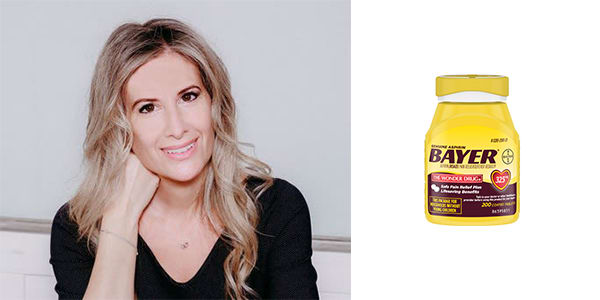
What to Expect: In the aftermath of a sunburn, you can expect “pain, inflammation, and blistering,” which can lead to “volume depletion, dehydration, and possible secondary infections due to open skin wounds,” says Amy Spizuoco, DO, a board certified dermatologist and founder of True Dermatology in NYC. “This can lead to scarring and, of course, skin cancer,” she adds. Try This: Her sunburn remedy kit includes 325 milligrams of aspirin, topical steroids, cold compresses, and increased fluid intake. “All of these decrease the inflammatory process, speed up healing, and reduce pain and swelling,” she notes. Avoid That: “Patients are to avoid any agents that can irritate and inflame the skin further, such as topical retinoids, AHAs and BHAs, and alcohol,” Dr. Spizuoco says. Inquiring minds should know: The no-alcohol mandate applies to both topical and ingestible forms.
The Expert: James Beckman, MD
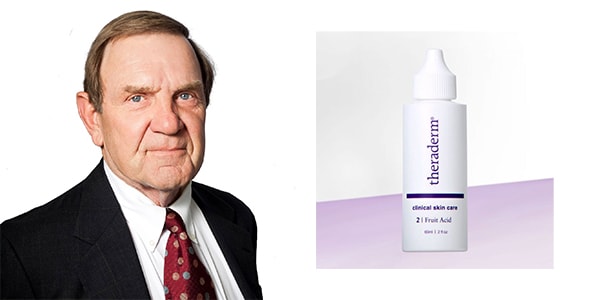
What to Expect: “Redness, pain, swelling, and blister formation” are all possible side effects of sunburn, says James Beckman, MD, a board certified plastic surgeon, adjunct associate clinical professor of dermatology at the University of Arkansas, and founder of Therapon Skin Health. This can lead to “long-lasting structural damage to skin,” he notes. Try This: While it’s generally recommended to avoid potential skin irritants, like alpha hydroxy acids (AHAs), when sunburned, a certain AHA — lactic acid — can actually serve as a sunburn remedy (when formulated properly!). “Lactic acid exists in every body cell normally to provide energy for the completion of multiple critical cellular functions,” Dr. Beckman explains. “[It] is a critical chemical in the immune system that can intervene in the natural gene response in skin cells and acts after any tissue injury as a critical part of the injury repair cascade.” As such, it is lactic acid action that can stop the progression of sunburn-related inflammation (think: redness, pain, swelling, and blisters). Normal lactic acid concentration in body cells is less than 1 percent concentration, but topical application of a more concentrated version of the active has been shown to reverse inflammatory chemical activity in the surface cells. Clinical studies have shown that applying Theraderm Fruit Acid Exfoliant within four to six hours of any skin burn (thermal, chemical, electrical, or sun) stops the progression of the burn and reverses burn symptoms already present. The Science: It is important to note that not any lactic acid product will do. “There are two different three-dimensional configurations chemically for lactic acid: levo or left handed ‘L’ and dextro or right handed ‘D,’” Dr. Beckman shares. As he explains, the body utilizes the ‘L’ formation of lactic acid. “I advocate everyone to use a skincare product with an elevated concentration of L lactic acid as part of daily facial care,” he notes. “Utilizing an alpha-hydroxy acid that's the same as that naturally produced by the human body, Theraderm Fruit Acid Exfoliant lactic acid toner aids in producing a smooth skin surface.” Pair It With: Dr. Beckman says to think of applying the Fruit Acid Exfoliant as step one. For best results, especially on the face, he recommends pairing it with the Theraderm Eternox Peptide Crème and Theraderm OPC Reparative Serum to further minimize skin damage.
All products featured are independently selected by our editors, however, AEDIT may receive a commission on items purchased through our links.
More Related Articles
Related Procedures

AI Plastic Surgeon™
powered by'Try on' aesthetic procedures and instantly visualize possible results with The AI Plastic Surgeon, our patented 3D aesthetic simulator.
